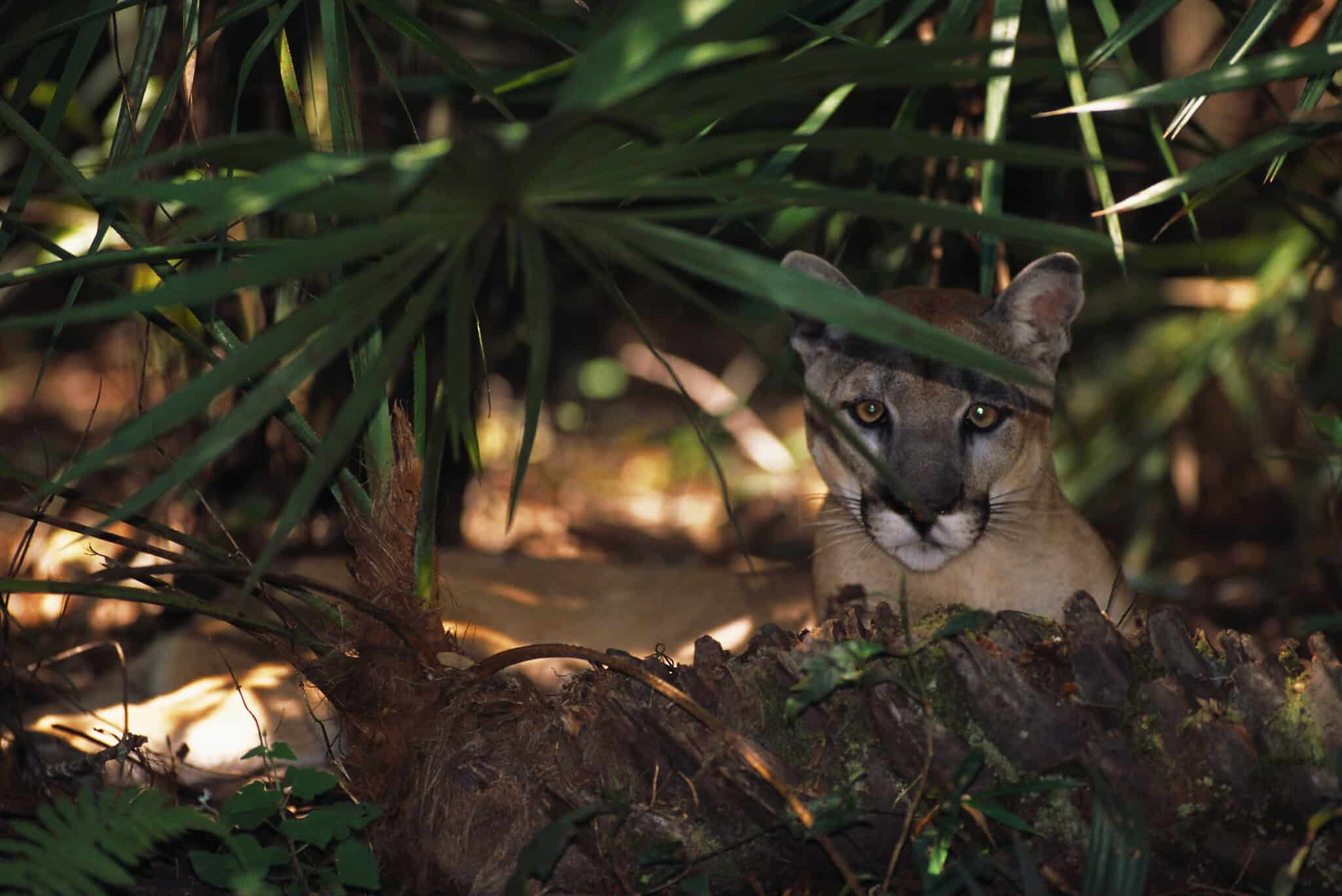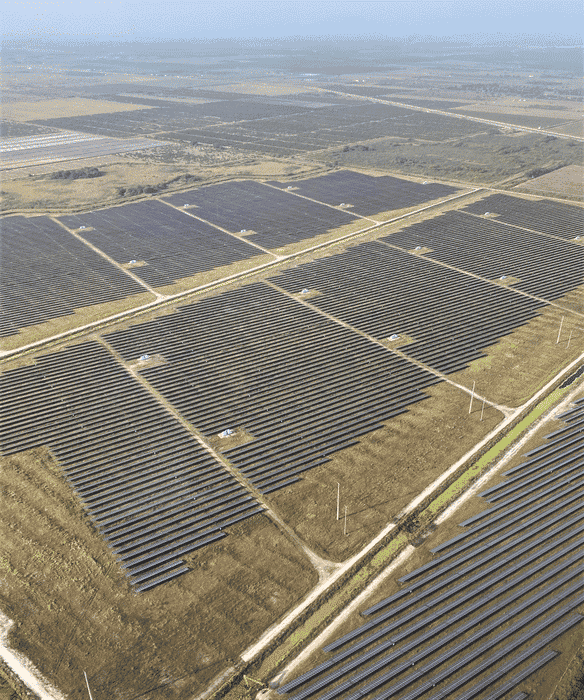
Solar Farms Create Conflict for Endangered Florida Panthers, Scientists Find

The only breeding population of the endangered Florida panther is restricted to a little more than 5% of its historic range in South Florida. Stuart Westmorland / Getty Images
As more places transition to cleaner energy, there’s another ecological issue at hand. What about the habitats impacted by building large renewable energy facilities? In Florida, utility-scale solar energy is important for reducing the carbon footprint of energy, but building these large-scale facilities of clean energy are also impacting the habitat of endangered Florida panthers.
The National Wildlife Federation reported that there are only about 120 to 130 Florida panthers left, and they typically reside in the swamplands of southern Florida. These animals are restricted to about 5% of their historic range in the state, and they used to roam much of the southeastern U.S.

The Florida panther is vulnerable to many threats, including low genetic diversity, diseases, mercury pollution and habitat loss because of construction.
Researchers from Florida Atlantic University have published a study specifically on the development of utility-scale solar energy and its impact on Florida panthers. The study authors found that most solar facilities are built on grasslands and pastures or agricultural land, which should minimally impact the panthers.
But they did find nine facilities built in major corridors known to be breeding habitats or otherwise core areas where Florida panthers could be found. Another 26 facilities were placed between corridors, which could create dispersal of the panther population. Four more facilities were within core areas or directly next to them. Only six facilities were found to have no or very minimal impact to the panthers’ habitats or connectivity.
“Our study suggests that in the drive to shift our energy production to carbon neutral sources, while maintaining maximum profitability, wildlife outside human dominated landscapes with large ranges and dispersal potentials may be pushed into less favorable habitat or cut off completely from available habitat by degradation of corridors,” said Olena V. Leskova, senior author of the study, a doctorate student in FAU’s Department of Geosciences and a geospatial scientist at the South Florida Water Management District.
The facilities are often enclosed with fences, typically barbed wire or sometimes “wildlife-friendly” fences. But the researchers noted that even the fencing around the solar facilities can be disruptive, causing issues for migrating wildlife, dividing panther habitats, restricting their range and even leading to injuries and death.
The authors are also concerned about the impact on other wildlife, such as gopher tortoises, eastern indigo snakes, burrowing owls and black bears.
“We believe that regulatory and permitting agencies, and the electrical companies themselves, should begin taking landscape connectivity into account when planning and permitting USSE facility site locations,” Leskova said.
Based in Los Angeles, Paige is a writer who is passionate about sustainability. Aside from writing for EcoWatch, Paige also writes for Insider, HomeAdvisor, Thrillist, EuroCheapo, Eat This, Not That!, and more. She earned her Bachelor’s degree in Journalism from Ohio University and holds a certificate in Women’s, Gender and Sexuality Studies. She also specialized in sustainable agriculture while pursuing her undergraduate degree. When she’s not writing, Paige enjoys decorating her apartment, enjoying a cup of coffee and experimenting in the kitchen (with local, seasonal ingredients, of course!).

 233k
233k  41k
41k  Subscribe
Subscribe 